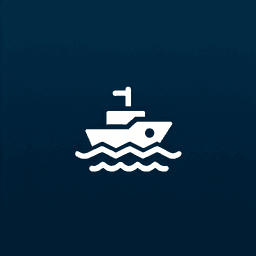
Waterline Definition and Examples: Understanding Its Significance in Various Contexts
January 16, 2025
Waterline
The term waterline refers to the line where the hull of a ship or boat meets the surface of the water. This line is crucial for sailors and maritime users as it indicates the vessel's buoyancy and stability. The waterline is a key factor in determining a ship's draft, which is the vertical distance between the waterline and the bottom of the hull (keel). This measurement is essential for ensuring that a vessel can safely navigate through various water depths without running aground.
In addition to its practical implications, the waterline also plays a role in the aesthetic design of a vessel. The paint or markings along the waterline can help in identifying the ship's load line, which is the maximum legal limit to which a ship can be loaded. This is often marked by the Plimsoll line, a special marking that indicates the safe loading level under different conditions.
Understanding the waterline is vital for maintaining a ship's performance and safety. It affects the vessel's speed, fuel efficiency, and handling characteristics. Changes in the waterline can indicate shifts in weight distribution or cargo load, which may require adjustments to ensure optimal performance.
Overall, the waterline is a fundamental concept in maritime operations, providing essential information for the safe and efficient management of a vessel.
Understanding the Waterline in Maritime Context
The waterline is a crucial concept in maritime terminology, referring to the line where the hull of a ship meets the water's surface. This line is significant as it marks the boundary between the submerged part of the ship and the portion that remains above water. Understanding the waterline is essential for maritime users, as it affects the ship's buoyancy and stability.
What is the Correct Definition of a Boat's Waterline?
The waterline on a boat is the intersection of the boat's hull and the water's surface. It is where the boat sits in the water, and it is crucial for determining the vessel's buoyancy and stability. The waterline can vary depending on the load and distribution of weight on the boat.
What is the Difference Between Load Line and Waterline?
The load line, often referred to as the Plimsoll line, is a specific type of waterline that indicates the legal limit to which a ship may be loaded. This line ensures that the ship maintains sufficient buoyancy and stability under various conditions, such as different water types and temperatures. While the waterline is a general term for where the hull meets the water, the load line is a regulatory mark that ensures safety.
Why is the Waterline Important?
The waterline is important for several reasons. It provides a visual indicator of whether a ship is properly loaded and balanced. It also helps in determining the ship's draft, which is the vertical distance between the waterline and the bottom of the hull. This information is vital for navigation, especially in shallow waters, to prevent grounding.
What is the Waterline of a Ship?
The waterline of a ship is the topmost level of water that touches the outer body of the ship. It is a critical factor in ship design and operation, as it affects the ship's hydrodynamics and fuel efficiency. Maintaining the correct waterline is essential to ensure the ship's performance and safety.
In summary, the waterline is a fundamental aspect of maritime operations, influencing everything from ship design to navigation and safety. Understanding its implications can help maritime users optimize their vessel's performance and ensure compliance with safety regulations.




